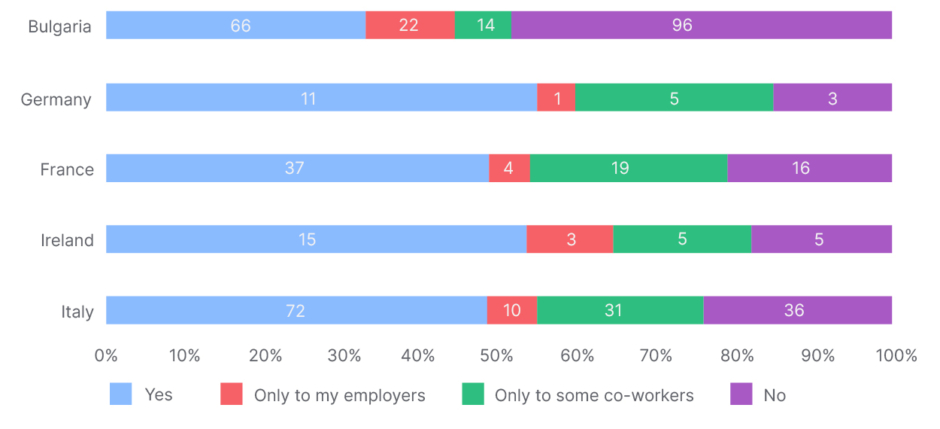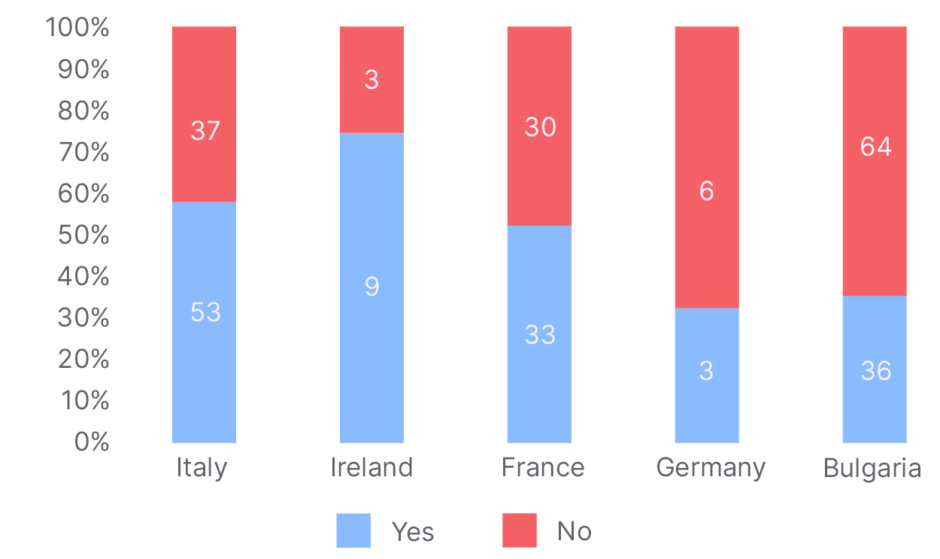BACKGROUND AND AIMS
Despite good seizure control, unemployment and underemployment are more common among people with epilepsy (PwE) for several reasons, including stigma.1,2 The EpilepsyPOWER is a European project, involving five Countries (Italy, Bulgaria, France, Ireland, and Germany), aimed to improve PwE’s workplace inclusion. For this project, the authors made a systematic review of PwE’s employment conditions and legislation in Europe, and developed surveys to explore work conditions among PwE and knowledge of epilepsy among higher education institutions (HEI).
MATERIALS AND METHODS
A systematic review on epilepsy and employment was performed, involving the selection of 55 articles from 1958–2023 and analysing employment rates and determinants of employment/unemployment. The authors developed two anonymous surveys asking for PwE’s employment condition, stigma and disclosure, and HEI’s general knowledge and attitudes about epilepsy.
RESULTS
For all considered countries, no specific job legislation for PwE was found. Unemployment rates ranged from similar, to twice or three times the general population, and above all factors, seizure control and employers’ attitudes contributed mostly to unemployment. Answers were collected from 567 PwE and 291 HEIs. Reported unemployment rates were 7.9% in Italy, 6.7% in Ireland, 8.5% in France, 15.0% in Germany, and 9.0% in Bulgaria. Rates of PwE who were fully employed were 42.9% in Italy, 53.0% in Ireland, 31.7% in France, 40.0% in Germany, and 47.9% in Bulgaria. As for disclosure, 24.2% of PwE did not disclose their condition in Italy, whereas 48.5% did not in Bulgaria (Figure 1). In most cases, HEI correctly defined epilepsy as a neurological disorder and treatable in most cases. Although most respondents had seen a seizure, in some countries (Germany and Bulgaria), they did not know how to give first aid (Figure 2).

Figure 1: Rates of people with epilepsy disclosing their condition at work.

Figure 2: Rates of people among higher education institutions who know how to intervene in case of seizures.
CONCLUSION
Although rates of unemployment are not uniformly reported, a clear situation of disadvantage rises for PwE in Europe. Seizure control, good employers’ attitudes, training programmes, and job counselling were identified as key elements favouring employment among PwE. Exploring PwE work conditions and HEI perspectives may help to spread an inclusive culture of integration and fight the marginalisation of PwE in workplaces, allowing them to get the right job position and better quality of life.







